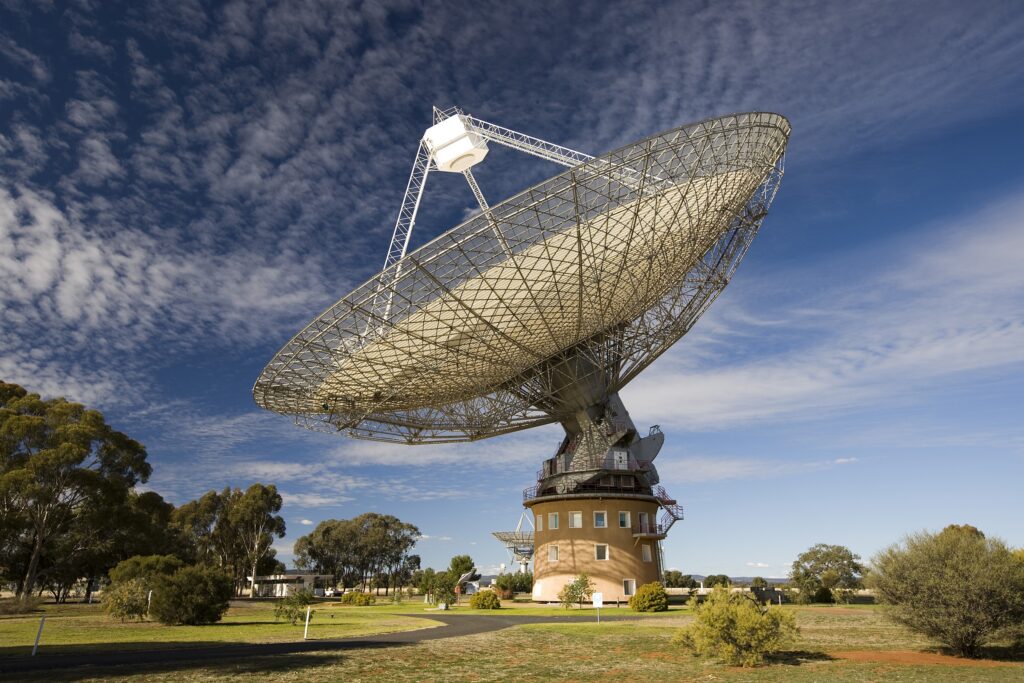Get involved
Would you like your students to use Murriyang, CSIRO's Parkes radio telescope, live and remotely to observe pulsars, analyse their data and interact with professional astronomers? If so then PULSE@Parkes is the program for you.
Latest news
Murriyang, our Parkes radio telescope

The 64-m Parkes Radio telescope
10 Facts About The Dish
- The selection of the Parkes Observatory site, on Wiradjuri Country, took several years and had to fulfil key technical requirements, such as a stable geology and low radio-frequency interference.
- It took three years to design and two years to build Murriyang; it was officially opened on 31 October 1961.
- The moving part of Murriyang, above the concrete tower, weighs 1000 tonnes – more than two Boeing 747 aircraft. This moving part is not fixed to the top of the tower but just sits on it.
- Murriyang only receives signals from space, but never sends them.
- Because the large surface of the dish catches the wind like a sail, Murriyang must be 'stowed' (pointed directly up) when the wind speed exceeds 35 kilometres an hour.
- It can detect radio waves from seven millimetres to four metres long, and be pointed with an accuracy of better than 11 arcseconds – about the width of a finger seen 150 metres away.
- Murriyang operates twenty-four hours per day, through rain and cloud.
- About 85 per cent of all time each year is scheduled for observing. Less than five per cent of that time is lost because of high winds or equipment problems. Most of the rest of the time each year is used for maintenance and testing.
- Over half of all known pulsars were discovered using this telescope.
- In 2020 local Wiradjuri elders gave the 64-metre telescope the name Murriyang, which represents the 'Skyworld' where a prominent creator spirit of the Wiradjuri Dreaming, Biyaami (Baiame), lives. Two smaller telescopes at CSIRO's Parkes Observatory also received Wiradjuri names.
Wiradjuri acknowledgement
The Parkes radio telescope is part of the Australia Telescope National Facility which is funded by the Australian Government for operation as a National Facility managed by CSIRO. We acknowledge the Wiradjuri people as the traditional owners of the Observatory site.





